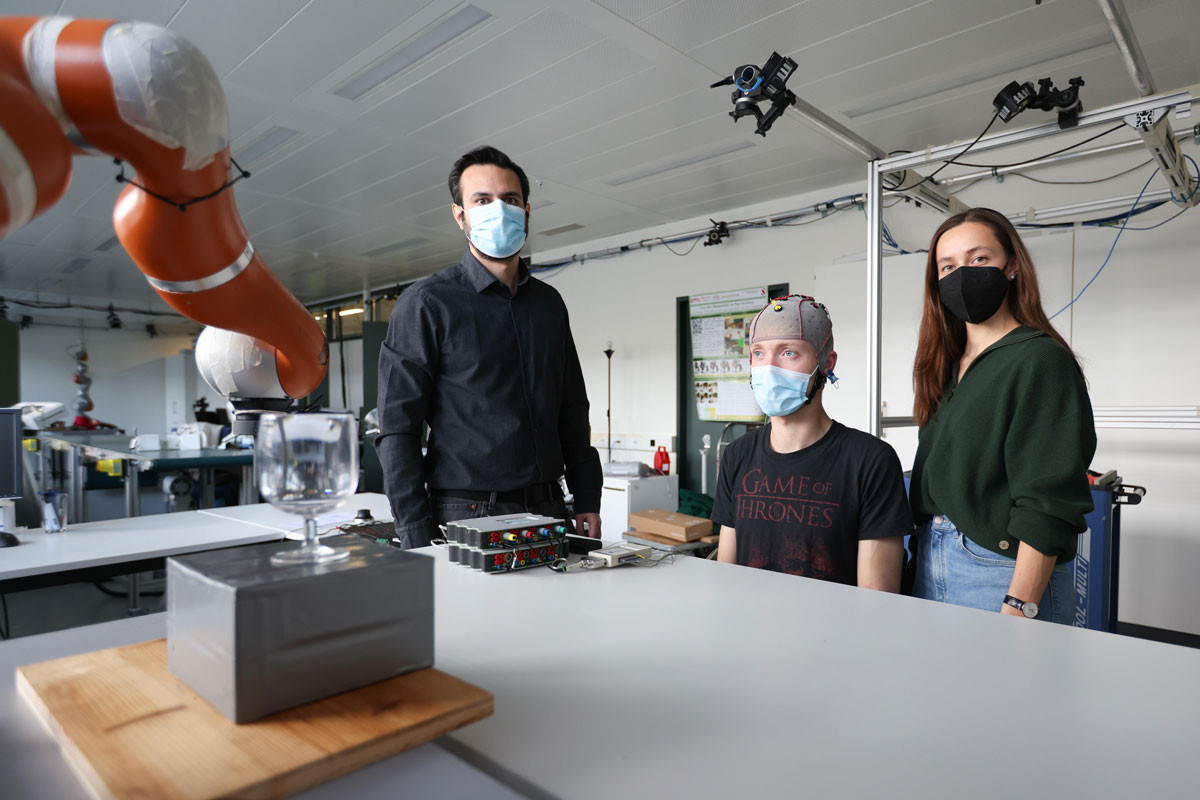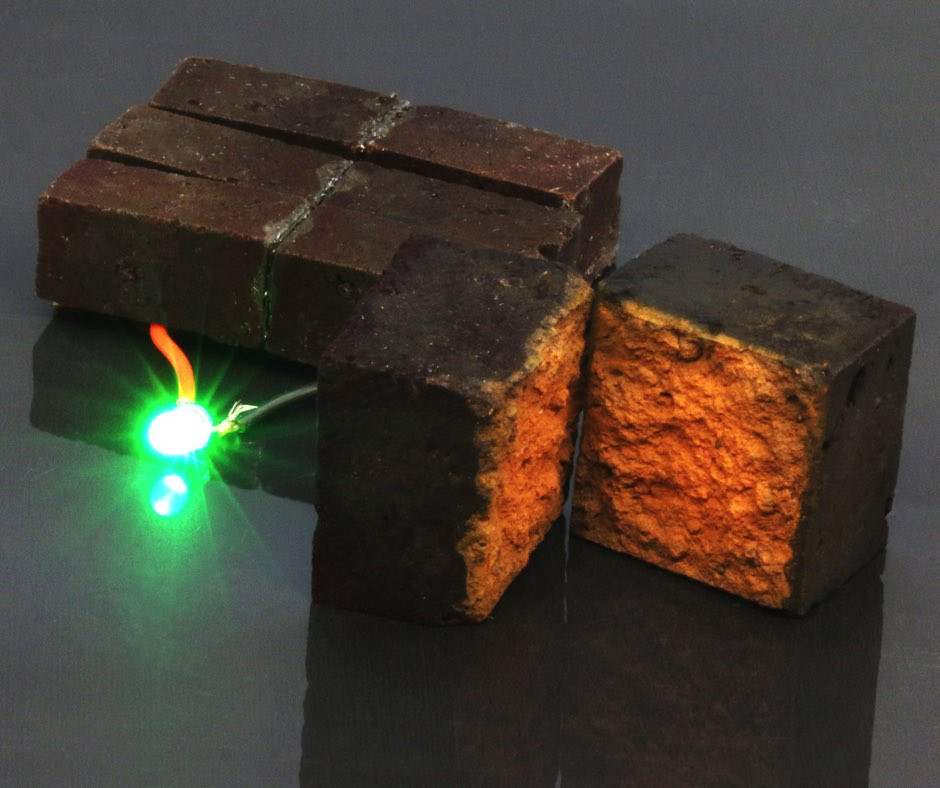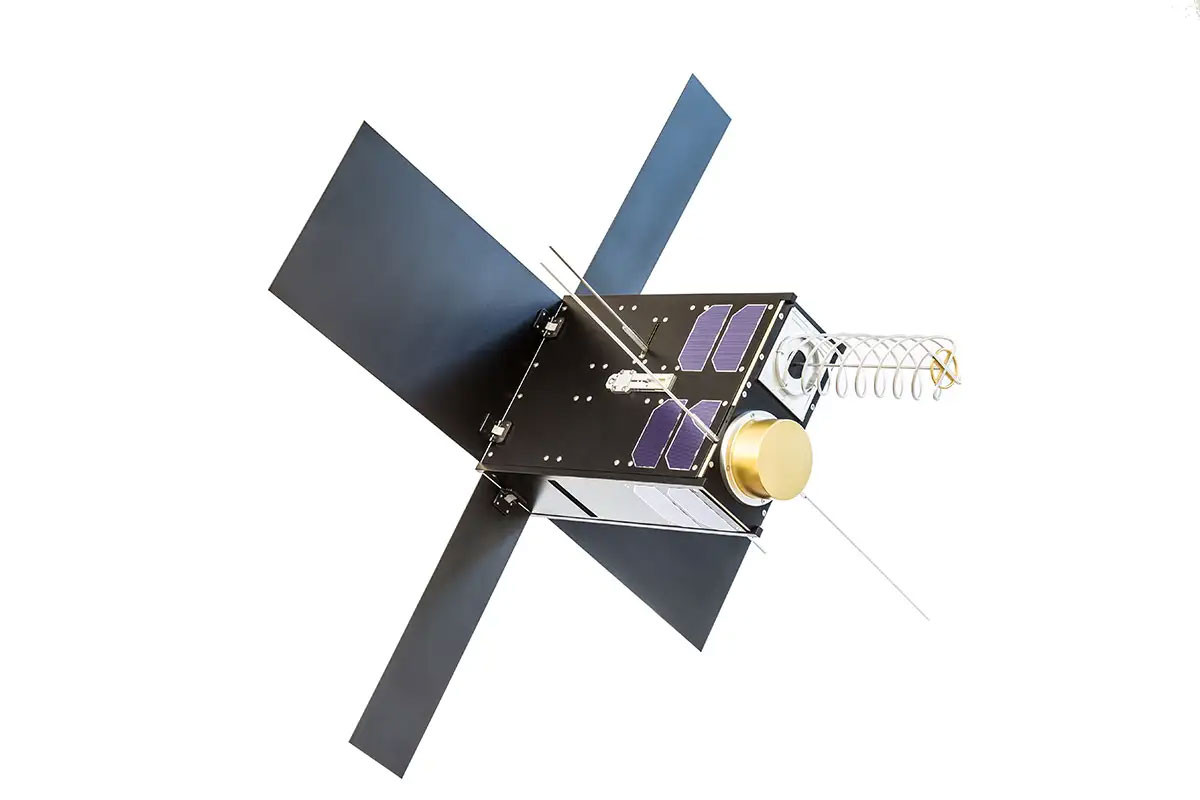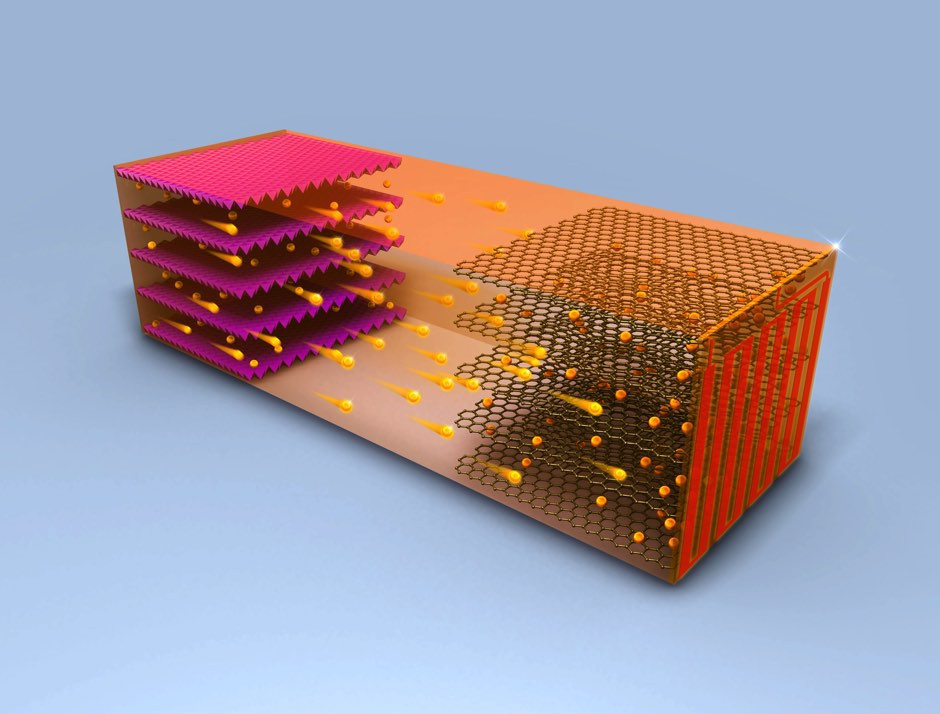What Technology Is The Future? Pioneer-technology.com is your premier guide, offering a detailed exploration into the groundbreaking advancements poised to redefine our world. From AI-driven solutions to sustainable energy innovations, discover the technologies shaping tomorrow.
1. What is Necrobotics and Its Potential?
Necrobotics is the utilization of dead organisms, like spiders, to create robots capable of gripping and manipulating objects. While still in its early stages, necrobotics holds promise for various applications in science and technology.
Imagine a future where dead animals are repurposed to further scientific research. Researchers at Rice University are exploring this concept, turning dead spiders into robot-like grippers. This is achieved by injecting air into the spider’s hydraulic system, which naturally extends its limbs. While still in its infancy, necrobotics could revolutionize how we approach robotics, offering unique capabilities derived from biological structures. This innovative approach could lead to more adaptable and sustainable robotic solutions in the future.
2. How Do Sand Batteries Work?
Sand batteries store thermal energy by heating sand using renewable sources like solar and wind, providing a simple yet effective way to store energy for later use. This technology offers a sustainable solution for heating buildings and storing energy for extended periods.
Finnish engineers have pioneered sand batteries, a simple yet effective technology that stores energy by heating sand. These batteries consist of 100 tons of sand inside a steel container, heated using wind and solar energy. The stored heat can then be distributed to nearby buildings, providing a sustainable and long-lasting energy solution. This technology utilizes resistive heating, where electrical currents heat the sand, making it a practical and eco-friendly alternative to traditional batteries.
 Sand Battery System
Sand Battery System
Alternative Text: Sand battery system in Finland, utilizing resistive heating for long-term energy storage.
3. Can E-Skin Revolutionize Long-Distance Communication?
E-skin, or electronic skin, can revolutionize long-distance communication by allowing users to share the sense of touch. Wireless soft e-skin developed at the City University of Hong Kong uses flexible actuators to sense movements and convert them into electrical signals, which are then transmitted to another e-skin system.
Imagine being able to hug a loved one from across the world. Engineers at the City University of Hong Kong have developed a wireless soft e-skin that could make this a reality. This e-skin uses flexible actuators to sense movements, converting them into electrical signals that are transmitted via Bluetooth. The receiving e-skin then converts these signals into mechanical vibrations, mimicking the original movements. This technology could enable friends and family to “feel” each other over long distances, adding a new dimension to virtual communication.
4. What is Smelly VR and Its Potential Applications?
Smelly VR is a technology that integrates olfactory feedback into virtual reality experiences, allowing users to smell virtual environments. Developed by researchers at the City University of Hong Kong, this technology has potential applications in online teaching, 4D movie watching, and immersive gaming.
Smelly VR, invented by researchers at the City University of Hong Kong, integrates olfactory feedback into virtual reality. This technology uses devices that heat and melt odorous wax, releasing adjustable concentrations of scents. With two versions available—one mounted on the upper lip and another as a facemask—this tech can create hundreds of different odor combinations. Imagine watching a 4D movie in VR and actually smelling the scenes; the possibilities are endless.
5. How Does SpinLaunch Work to Catapult Satellites into Space?
SpinLaunch uses kinetic energy to catapult satellites into space, offering a more cost-effective and fuel-efficient alternative to traditional rockets. This innovative system can spin payloads at incredible speeds before launching them through a large launch tube.
SpinLaunch is revolutionizing space launches by using kinetic energy instead of traditional chemical fuel. This prototype system spins payloads at speeds up to 8,000 km/h and 10,000G before launching them skyward through a large launch tube. While small rocket engines are still needed to reach orbit, SpinLaunch claims this system reduces fuel and infrastructure costs by an impressive 70%. With agreements signed with NASA, this technology could significantly lower the barriers to space exploration.
 SpinLaunch Satellite Launch System
SpinLaunch Satellite Launch System
Alternative Text: SpinLaunch system using kinetic energy to launch satellites into space.
6. What is Xenotransplantation and What Are Its Challenges?
Xenotransplantation involves transplanting cells, tissues, or organs from an animal source into a human, offering a potential solution to organ shortages. While promising, it faces challenges such as immune rejection and the need for gene editing to ensure compatibility.
Xenotransplantation—transplanting organs from animals to humans—could revolutionize surgery. One of the most common procedures is transplanting a pig’s heart into a human. While this has been done successfully twice, one patient lived only a few months, and the second is still under observation. These surgeries require gene editing to prevent immune rejection and excessive tissue growth. Despite the risks, xenotransplantation holds the potential to provide a regular supply of animal organs to humans in need.
7. How Does AI Image Generation Work?
AI image generation uses artificial intelligence to create original images from worded prompts, opening new possibilities for art, design, and content creation. Technologies like Dall-E and Midjourney allow users to generate unique visuals simply by typing in a description.
AI image generation is transforming the world of art. Companies like OpenAI have created software like Dall-E that can generate images from simple text prompts. Just type in ‘a dog wearing a cowboy hat singing in the rain,’ and you’ll receive original images fitting that description. Similarly, Midjourney creates gothic masterpieces from text prompts. This technology could revolutionize art exhibitions, provide quick illustrations for companies, and transform meme creation.
8. What Are Brain-Reading Robots and How Can They Assist Tetraplegic Patients?
Brain-reading robots use brain-computer interfaces and machine learning algorithms to interpret brain signals, enabling tetraplegic patients to interact with the world. These robots can perform tasks based on the user’s thoughts and preferences, offering greater independence.
Brain-reading robots are no longer science fiction. Researchers at the Swiss Federal Institute of Technology Lausanne (EPFL) have developed a system that allows tetraplegic patients to interact with the world. This technology uses a machine-learning algorithm, a robot arm, and a brain-computer interface to interpret brain signals. The robot arm performs tasks, and the algorithm learns from the brain’s feedback to adjust movements. This could lead to brain-controlled wheelchairs and assistance machines, offering greater independence to those with limited mobility.
 Brain Reading Robot Arm
Brain Reading Robot Arm
Alternative Text: Robot arm controlled by brain signals assisting in lab tasks.
9. What Are the Benefits of 3D Printed Bones?
3D printed bones offer patient-specific replacements made from tricalcium phosphate, which the body can remodel into vascularized bone. This technology allows for full restoration of bone function and better integration with the body.
3D printing is revolutionizing medicine, and one of the most exciting applications is 3D printed bones. Companies like Ossiform specialize in creating patient-specific bone replacements from tricalcium phosphate, a material similar to human bones. Hospitals can perform an MRI, send it to Ossiform, and receive a 3D model of the needed implant. Once printed, the bone can be used in surgery, allowing the body to remodel the implant into vascularized bone. This porous structure enables full restoration of function, making it a game-changer for bone replacement.
10. What is 3D-Printed Food and What Are Its Potential Applications?
3D-printed food involves creating meals layer by layer using food inks and cooking them with precision using lasers or other methods. This technology can personalize meals for athletes, patients with dietary conditions, or anyone short on time.
What’s for dinner tonight? Soon, it could be a 3D-printed, laser-cooked cake. Researchers at Columbia University School of Engineering have created a device that can construct a seven-ingredient cheesecake using food inks and cook it to perfection with a laser. Their creation contained banana, jam, peanut butter, and Nutella. Tasty. The technology could one day be used to create personalized meals for everyone from professional athletes to patients with dietary conditions, or could be useful for those who are simply short on time.
 3D Printed Cake
3D Printed Cake
Alternative Text: A 3D printed cheesecake made with banana, jam, peanut butter, and Nutella.
11. How Does Natural Language Processing Work?
Natural Language Processing (NLP) uses AI to enable computers to understand, interpret, and generate human language. NLP powers applications like Google’s autocomplete, smartphone text prediction, and advanced chatbots.
Natural Language Processing (NLP) is transforming how we interact with technology. You’ve likely seen it in Google’s autocomplete or your smartphone’s predictive text. OpenAI is at the forefront of AI with its image generator, Dall-E 2, and its chatbot, ChatGPT. ChatGPT, powered by GPT-3, can write poems, explain complex theories, and hold full-length conversations. Trained on billions of text examples, GPT-3 can form coherent and logical sentences, create websites, write books, and even make jokes.
12. What is Boom-Free Supersonic Flight?
Boom-free supersonic flight aims to eliminate the loud sonic booms associated with supersonic aircraft, making it more environmentally and socially acceptable. NASA’s X-59 aircraft is designed to control airflow and prevent sonic booms from disturbing people on the ground.
NASA’s X-59 ‘quiet’ supersonic aircraft is set to take to the skies for its first test flight at the Armstrong Flight Research Center later this year. The plane is currently being assembled in a hangar at Lockheed Martin’s Skunk Works facility in Palmdale, California. Its fuselage, wings, and tail have been specially designed to control the airflow around the plane as it flies, with the ultimate aim of preventing a loud sonic boom from disturbing people on the ground below when it breaks the sound barrier. If the initial test goes to plan, the space agency aims to carry out further test flights over inhabited areas to gauge the public’s response to aircraft in 2024.
 NASA Quiet Supersonic Aircraft
NASA Quiet Supersonic Aircraft
Alternative Text: NASA X-59 quiet supersonic aircraft designed to eliminate sonic booms.
13. How Do Digital Twins Track Your Health?
Digital twins in healthcare create a 3D digital avatar of a patient’s body that can be tracked over time, providing detailed health data and personalized medicine. Companies like Q Bio use scanners to measure biomarkers and produce digital twins for preventative care.
In Star Trek, human beings can walk into the medbay and have their entire body digitally scanned for signs of illness and injury. Doing that in real life would, say the makers of Q Bio, improve health outcomes and alleviate the load on doctors at the same time. The US company has built a scanner that will measure hundreds of biomarkers in around an hour, from hormone levels to the fat building up in your liver to the markers of inflammation or any number of cancers. It intends to use this data to produce a 3D digital avatar of a patient’s body – known as a digital twin – that can be tracked over time and updated with each new scan.
14. What is Direct Air Capture and How Does it Help the Environment?
Direct Air Capture (DAC) technology removes carbon dioxide directly from the atmosphere, offering a way to reduce greenhouse gas emissions. DAC facilities either store the CO2 underground or use it to produce synthetic fuels.
Through the process of photosynthesis, trees have remained one of the best ways to reduce the levels of CO2 in the atmosphere. However, new technology could perform the same role as trees, absorbing carbon dioxide at greater levels while also taking up less land. This technology is known as Direct Air Capture (DAC). It involves taking carbon dioxide from the air and either storing the CO2 in deep geological caves under ground, or using it in combination with hydrogen to produce synthetic fuels.
15. What Are Green Funerals and Why Are They Important?
Green funerals are eco-friendly alternatives to traditional burials and cremations, reducing the carbon footprint associated with death. Options include composting, mushroom suits, and alkaline hydrolysis.
Sustainable living is becoming a priority for individuals squaring up to the realities of the climate crisis, but what about eco-friendly dying? Death tends to be a carbon-heavy process, one last stamp of our ecological footprint. The average cremation reportedly releases 400kg of carbon dioxide into the atmosphere, for example. So what’s a greener way to go? In Washington State in the US, you could be composted instead. Bodies are laid in chambers with bark, soil, straw, and other compounds that promote natural decomposition. Within 30 days, your body is reduced to soil that can be returned to a garden or woodland. Recompose, the company behind the process, claims it uses an eighth of the carbon dioxide of a cremation.
16. How Can Energy-Storing Bricks Power Our Homes?
Energy-storing bricks are red bricks modified to store energy like a battery, using a conducting coating that converts them into supercapacitors. Walls made of these “smart bricks” could store substantial energy and be recharged rapidly.
Scientists have found a way to store energy in the red bricks that are used to build houses. Researchers led by Washington University in St Louis, in Missouri, US, have developed a method that can turn the cheap and widely available building material into “smart bricks” that can store energy like a battery. Although the research is still in the proof-of-concept stage, the scientists claim that walls made of these bricks “could store a substantial amount of energy” and can “be recharged hundreds of thousands of times within an hour”.
 Energy Storing Brick
Energy Storing Brick
Alternative Text: A red brick energy storage device lighting up a green LED, developed at Washington University in St. Louis.
17. What is Self-Healing Concrete and How Does It Work?
Self-healing concrete uses sand, gel, and bacteria to create a building material that can repair its own cracks. This “living concrete” is more environmentally friendly than traditional concrete and can even suck up toxins from the air.
Scientists have developed what they call living concrete by using sand, gel and bacteria. Researchers said this building material has structural load-bearing function, is capable of self-healing and is more environmentally friendly than concrete – which is the second most-consumed material on Earth after water. The team from the University of Colorado Boulder believe their work paves the way for future building structures that could “heal their own cracks, suck up dangerous toxins from the air or even glow on command”.
Alternative Text: Bacteria growing and mineralizing in the sand-hydrogel structure of self-healing concrete.
18. Can Fuel Be Made from Thin Air?
Yes, fuel can be made from thin air using devices that extract water from the atmosphere and use sunlight to produce hydrogen fuel. This technology offers a sustainable alternative to traditional fossil fuels.
Chemical engineers from Switzerland’s École Polytechnique Fédérale de Lausanne have created a prototype device that can produce hydrogen fuel from the water found in air. Inspired by leaves, the device is made from semiconducting materials that harvest energy from sunlight and use it to produce hydrogen gas from water molecules found in the atmosphere. The gas could then, potentially, be converted for use as liquid fuels.
19. How Can the Internet Be Accessible to Everyone?
Making the internet accessible to everyone involves using technologies like helium balloons and microsatellites to beam internet to inaccessible areas. Companies like Google and Hiber are working to provide internet access to remote regions.
We can’t seem to live without the internet (how else would you read sciencefocus.com?), but still only around half the world’s population is connected. There are many reasons for this, including economic and social reasons, but for some the internet just isn’t accessible because they have no connection. Google is slowly trying to solve the problem using helium balloons to beam the internet to inaccessible areas, while Facebook has abandoned plans to do the same using drones, which means companies like Hiber are stealing a march.
 Miniature Internet Satellite
Miniature Internet Satellite
Alternative Text: The Hiber miniature satellite used to provide internet access to remote areas.
20. What is 3D-Printed Eye Tissue and Its Significance?
3D-printed eye tissue allows scientists to model the human eye and develop treatments for eye diseases like age-related macular degeneration (AMD). Researchers are using stem cells and bioprinting to create retinal tissue for studying and treating vision-affecting conditions.
Researchers at the National Eye Institute in the US have produced retinal tissue using stem cells and 3D bioprinting. The new technique may help scientists model the human eye to better understand – and develop treatments for – diseases and conditions that affect people’s vision, such as age-related macular degeneration (AMD). The researchers created tissue found in the outer blood-retina barrier, which is the area AMD is known to start in, by printing stem cells taken from patients into a gel and allowing them to grow over several weeks.
21. How Can Car Batteries Charge in 10 Minutes?
Car batteries can charge in 10 minutes using self-heating technology that heats the battery to 60°C and then rapidly cools it, preventing lithium spikes and heat damage. This fast-charging capability is key to increasing the adoption of electric vehicles.
Fast-charging of electric vehicles is seen as key to their take-up, so motorists can stop at a service station and fully charge their car in the time it takes to get a coffee and use the toilet – taking no longer than a conventional break. But rapid charging of lithium-ion batteries can degrade the batteries, researchers at Penn State University in the US say. This is because the flow of lithium particles known as ions from one electrode to another to charge the unit and hold the energy ready for use does not happen smoothly with rapid charging at lower temperatures.
 Fast Charging Battery
Fast Charging Battery
Alternative Text: A fast-charging battery invented by Chao-Yang Wang Group at Penn State University.
22. What Are Artificial Neurons on Silicon Chips and How Can They Help Medical Implants?
Artificial neurons on silicon chips mimic the electrical properties of real neurons, requiring very little power to operate. These artificial neurons can be used in medical implants to treat conditions like heart failure and Alzheimer’s, as they require significantly less power than microprocessors.
Scientists have found a way to attach artificial neurons onto silicon chips, mimicking the neurons in our nervous system and copying their electrical properties. “Until now neurons have been like black boxes, but we have managed to open the black box and peer inside,” said Professor Alain Nogaret, from the University of Bath, who led the project. Researchers hope their work could be used in medical implants to treat conditions such as heart failure and Alzheimer’s as it requires so little power.
FAQ Section
1. What new technologies are on the horizon?
Emerging technologies include necrobotics, sand batteries, e-skin for remote touch, smelly VR, SpinLaunch, xenotransplantation, AI image generation, brain-reading robots, 3D-printed bones and food, and advanced natural language processing.
2. What technologies will shape the future?
Technologies poised to shape the future range from sustainable innovations like direct air capture and energy-storing bricks to medical advancements like xenotransplantation and 3D-printed organs.
3. What are the most disruptive technologies?
Disruptive technologies include AI-driven solutions, brain-computer interfaces, and sustainable energy innovations that challenge existing paradigms.
4. How is AI changing the future?
AI is revolutionizing various fields through image generation, natural language processing, and enabling brain-reading robots, transforming how we interact with technology.
5. What advancements are being made in sustainable technology?
Advancements in sustainable technology include direct air capture, green funerals, energy-storing bricks, and fuel production from thin air.
6. How are medical technologies advancing?
Medical technologies are advancing through xenotransplantation, 3D-printed eye tissue, and digital twins for personalized health tracking.
7. What is the future of space technology?
The future of space technology involves innovative launch systems like SpinLaunch and efforts to provide internet access via microsatellites.
8. How is virtual reality evolving?
Virtual reality is evolving with the integration of olfactory feedback, creating more immersive and realistic experiences through technologies like smelly VR.
9. What are some examples of future materials?
Examples of future materials include self-healing concrete and tricalcium phosphate for 3D-printed bones, offering enhanced functionality and sustainability.
10. How will our lives change with these new technologies?
Our lives will be transformed through personalized medicine, sustainable living solutions, enhanced communication methods, and increased access to technology and information.
Stay ahead of the curve by visiting pioneer-technology.com, where we delve into these innovations and more, providing you with the insights needed to navigate the future. Explore in-depth articles, expert analysis, and the latest updates on the technologies set to transform our world.
Ready to dive deeper into the future of technology? Visit pioneer-technology.com today to explore our comprehensive coverage and stay informed about the groundbreaking innovations shaping our world! Address: 450 Serra Mall, Stanford, CA 94305, United States. Phone: +1 (650) 723-2300. Website: pioneer-technology.com.


